Lines 98: Discovering a Classic
This is an overview and analysis of the classic puzzle game Lines and its many clones, most of which use the name Lines 98. Never heard of it? Neither had I until recently!
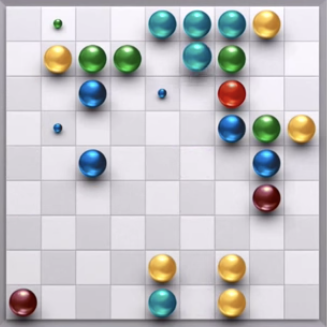
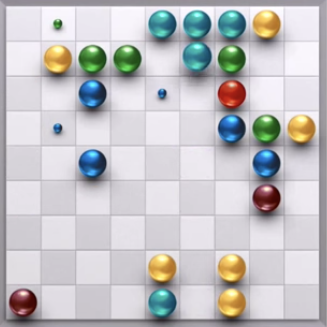
Overview
This is an overview and analysis of the classic puzzle game Lines and its many clones, most of which use the name Lines 98. Never heard of it? Neither had I until recently!
Initial Exposure: Wakaba Lines
My introduction to Lines started when Murphy McCauley sent me a link to this game at http://wakaba.c3.cx/w/lines .
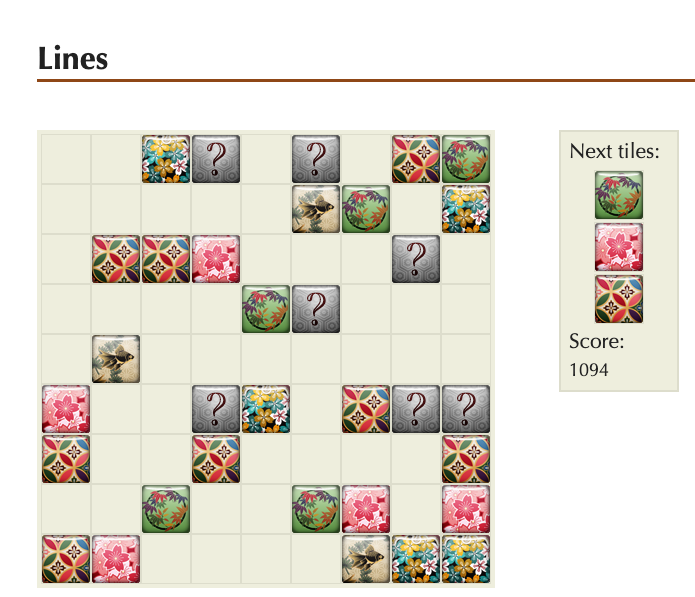
It is a simple web game with simple "Connect 5" play mechanics. There are 6 different types of tiles (plus a 7th wildcard type in the Easy game) that are placed on the board each turn (more or less). The goal is to move individual tiles around to make lines of 5 or more of the same tile horizontally, vertically, or diagonally (picture me gesturing while saying "like this, like this, or like this" in the style of Russ Hanneman).
Each turn you can move a single tile to any contiguously connected open spaces that aren't totally enclosed by other tiles. If you make a line of matching tiles, the line disappears, nothing else happens, and you proceed to your next turn. If you fail to make a match on that turn, 3 more randomly-selected tiles appear in randomly selected spots. You lose when all spots fill up.
It's pretty fun. I'll discuss my thoughts on the gameplay later, but first let me touch on the origin and evolution of Lines.
Whose Lines Is It Anyway?
Turns out the web game above is one of many clones based on a 1992 DOS game called Color Lines, designed by Oleg Demin and published by the Russian game company Gamos.
The game was revisited and updated with the 1998 release of Lines 98, published by Sorcerer Software. I don't know if Oleg Demin, the original developer, was involved.
I tracked down a copy (ahem, "lines98-5.1.zip") and tried it out. Amazing, 19 years later it still runs pretty well on Windows 10. The text (including the About text) isn't readable though - I think it's supposed to be Russian but it's showing up as garbled extended ASCII.
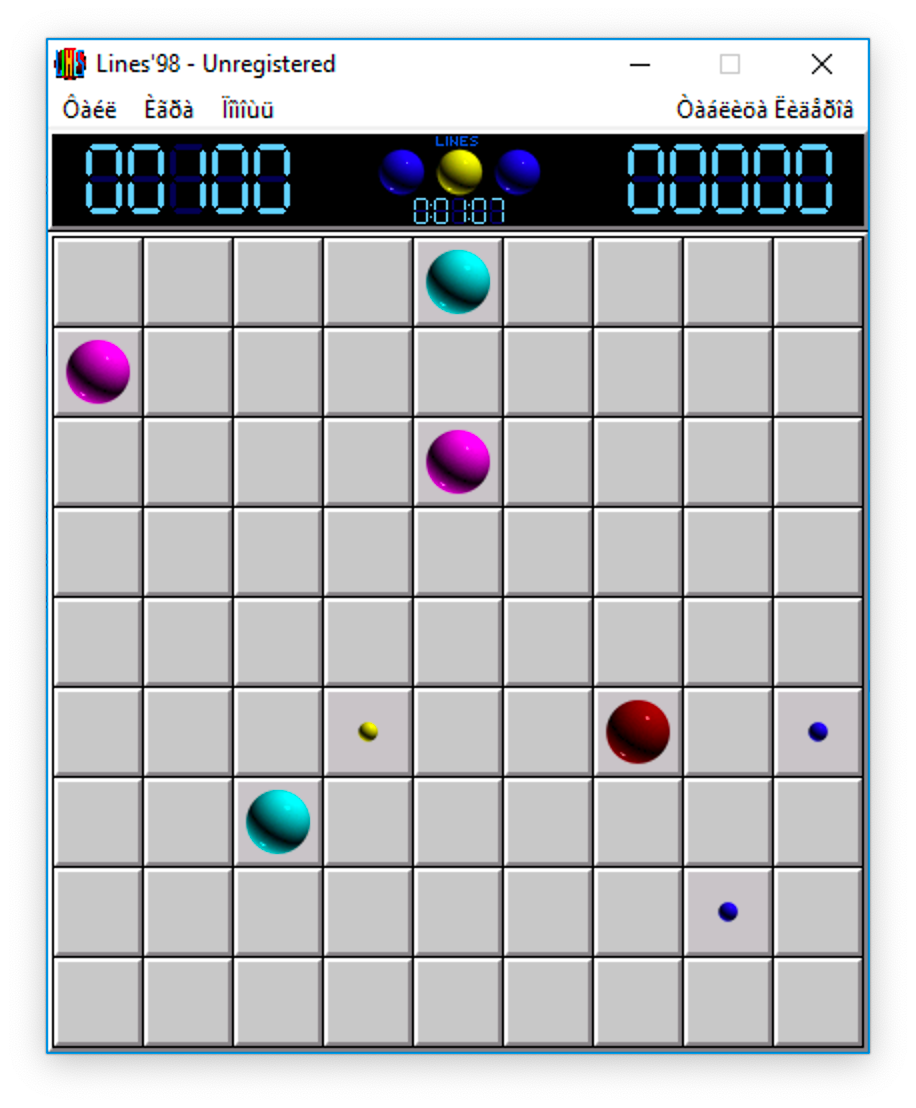
The graphics are very similar and the sound effects are identical to this mobile version of Lines 98, so this may be an official port. The link in the video is no longer available on the app store.
After these three games (Lines, Lines 98 for Windows, Lines 98 for mobile) the trail of this game's lineage goes cold. Actually the the reverse: the trail goes hot - bright, burning hot. There are a bazillion clones of this game now and most of them have the words "Lines 98" in their title, so it's hard to tell when the popularity of this game exploded and if there are any other notable versions.
A partial list of clones available on iOS:
- Lines 98 Standard: Color Lines
- Lines 98 - Color Lines Classic
- Color Lines 98
- Lines 98 Classic: Color Ballz
- Lines 98 Classic - Puzzle Game
- Lines 98: Classic Lines PC
- Lines 98 and Bubbles Classic
- Lines 98 Classic
- New Lines 98
- Classic Color Lines 98
- Lines 98 Standard: Color Lines
- Lines 98 !
- Lines 98 3D - Color Lines 3D
- Color Lines (Lines 98)
- Lines 98 - Lines 98
... and so on. I seriously wonder if all these developers know that the "98" refers to 1998 or are just cranking out a clone without thinking about it. Lines 99 anyone?
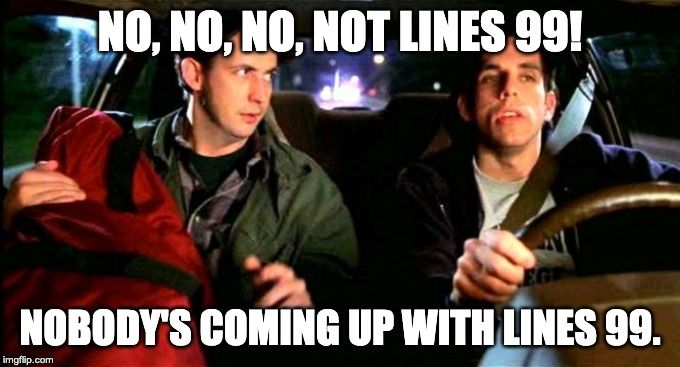
Game Design Review
- The game mechanics of Lines 98 (as I'll refer to it) are easy to pick up and understand.
- As with many games there are some standard techniques and strategies that you develop in your first few games (filling out partially complete lines, making sure that any pieces that you move out of the way of one line are being used to build another line, etc.).
- The original Lines as well as the web version that I played first had a "next 3 pieces" preview but there was no way to tell where they would appear. I had the thought that a nice improvement would be to show the spots on the board where those next three pieces would appear. I'm pleased to report that that's exactly what Lines 98 added.
- The next piece placement preview adds a welcome additional layer of strategy to the game. Being able to see which colors will pop up where lets you move pieces to better take advantage of those upcoming changes.
- I'm still fairly new to the game, but I can't shake the feeling that there's a slow but steady and inevitable attrition to the game; an average gain of 1.4 tiles per turn or something like that. I suspect that the best high scores will all be limited to the same general bracket. I would love to be wrong about that and know that good players can keep the board clear in general. But if I'm right, this tempers my enthusiasm to keep playing. I don't want to just play for 20 minutes and end up with about the same score every time.
- In line with the above, I feel like the mechanics are imperfect. There needs to be a higher possibility of keeping the board clear over time. Perhaps that involves reducing matches from 5 to 4, different tile movement or drop mechanics, or modified tile types. I was able to keep going indefinitely on the Lines web app on Easy mode because it has "wild card" tiles that can match anything. I was also able to keep going indefinitely on a mobile version with a smaller board and only 3 colors instead of 6 colors. Both of those examples were arguably too easy, but some combination of factors should make the game a more open-ended.
Game Implementation Review
The most polished clone I've seen is Lines 98 - Lines 98 (yeah, that's the name) on iOS. Sadly it's buggy - the piece placement previews are sometimes flat-out wrong which spoils the whole thing.
Of all the dozens of other clones available, I can't find a single one that completely satisfies. My wish list, clarified by trying out a bunch of these:
- The graphics should be bright and crisp and it should be easy to distinguish between different colors. Why do so many of the implementations have murky colors?!
- The sounds should be subtle and pleasant - you're going to be hearing them a bunch. No "glass bottles breaking" when a line disappears, please!
- And of course general polish will set some versions far ahead of others. So many of them have very amateur button designs and game animation, etc.
- Only one variant I tried highlighted the board areas you could move a ball to once you tapped it. That was a nice touch.
Bottom Line
There's still room at the top of the pyramid for a definitive Lines 98 clone, with crisp, colorful graphics, good animation, a professional style, pleasant sound effects, and a better gameplay balance that doesn't make defeat inevitable.
Lines 99, anyone?
